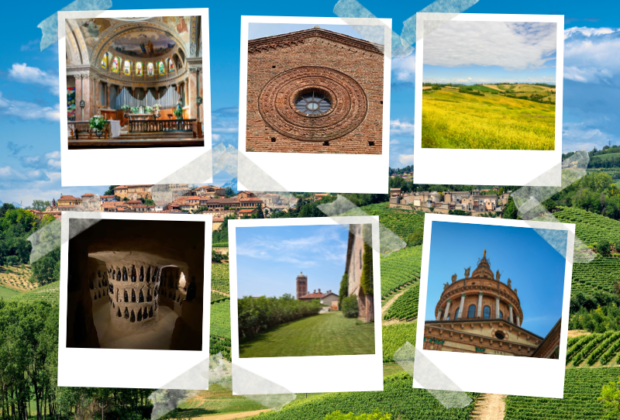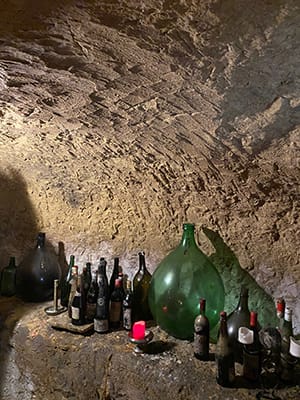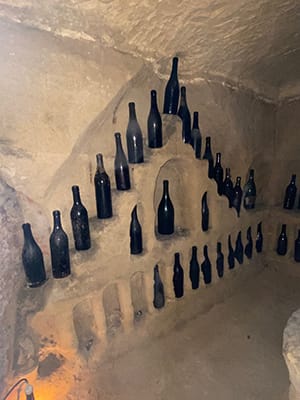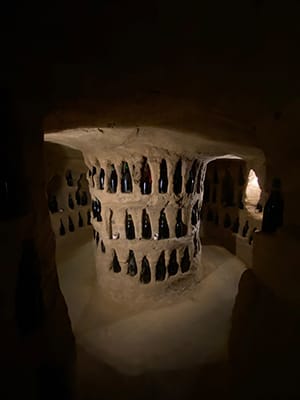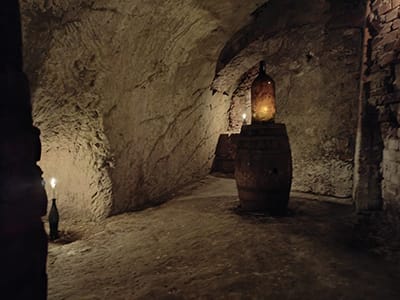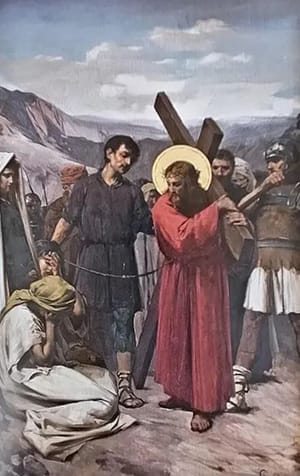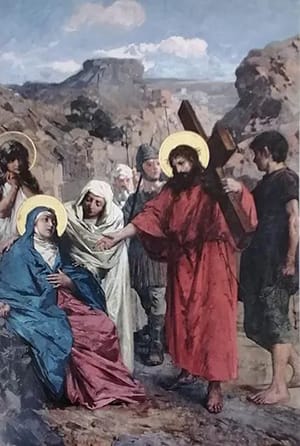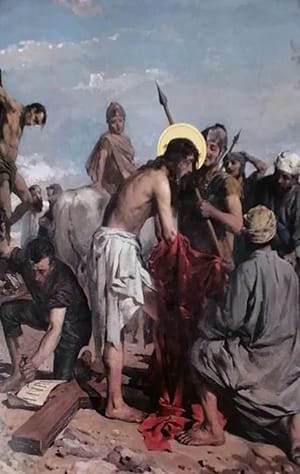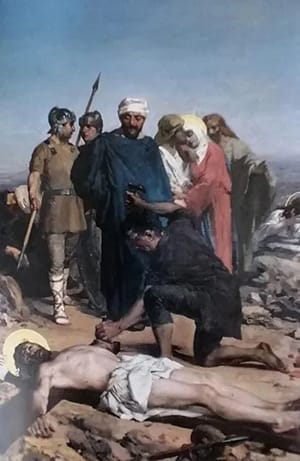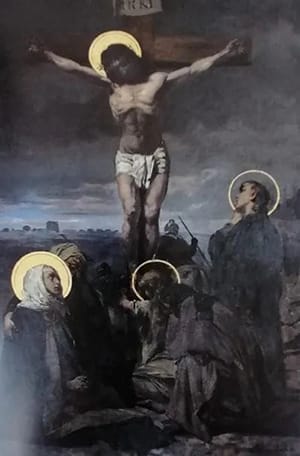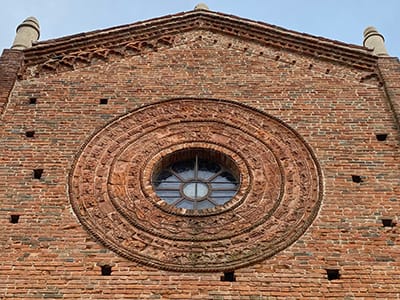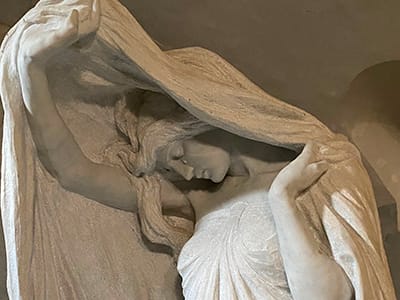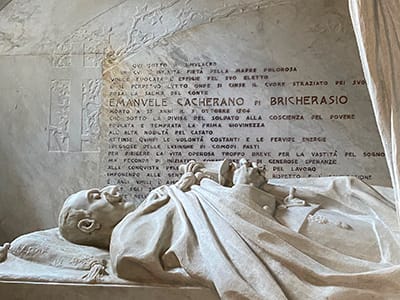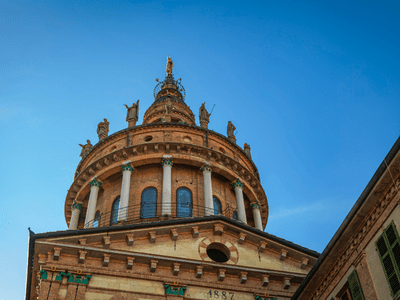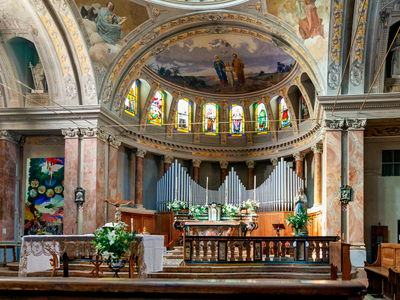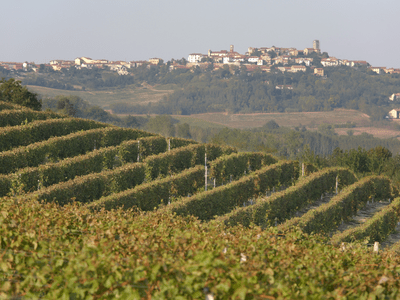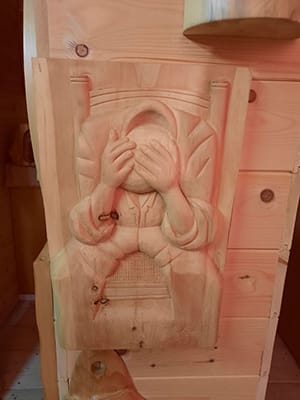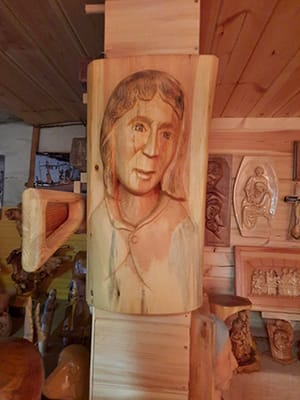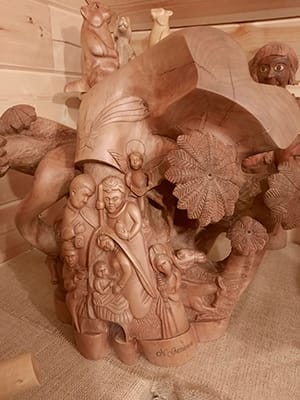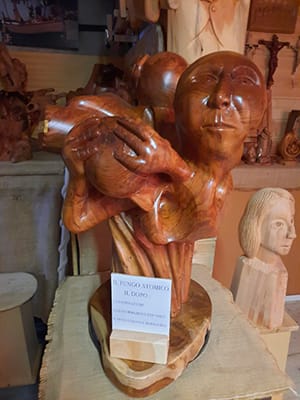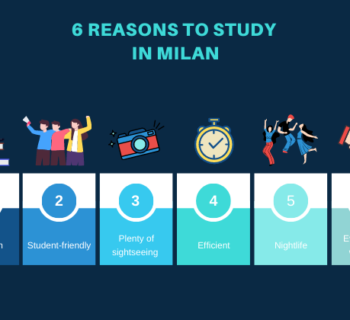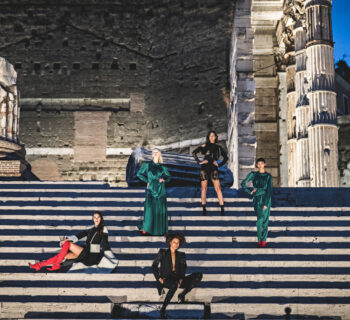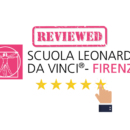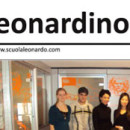Where millions of years ago prehistoric fish swam and the waves of the sea lapped sandy bottoms, today is the Monferrato. The fossils set in the tuff hills and in the canton stones that adorn the facades of many houses in the area testify to this.
The famous infernòt has been excavated in the tuff, whose name derives from the Provençal enfernet which indicated a narrow and windowless prison. These constructions, almost all excavated by peasants without any engineering notion, are deeply linked to the history of Piedmontese winemaking and represent such a particular element as to be counted among the UNESCO heritages.
Unlike the cellars, in addition to being located at a greater depth in the subsoil, the infernòt have no windows and have always been considered the ideal place for storing bottled wine, as inside them the temperature remains constant throughout the year. In the infernotti the wine of the best vintages and that of memorable events such as the birth of a child were kept. In these cases, the bottles were opened only on very special occasions, such as the coming of age of the sons and the marriage of the daughters.
There is a tourist circuit of the infernòt, thanks to which it is possible to explore these extraordinary structures through guided tours. The municipality of Fubine Monferrato, in the province of Alessandria, is undoubtedly one of the villages in which this type of experience can be accessed more easily, as the tourism office is organized very efficiently and is open every day.
But this is not the only reason to go to Fubine: the village, which takes its name from the artisan production of buckles (fibulin in Latin) that took place here in Roman times, is truly beautiful and full of artistic unexpected treasures.
Magnificent is the parish church of Santa Maria Assunta, whose facade is considered one of the greatest examples of fifteenth-century architecture in Piedmont. But it does not end there: the skyline of the village is dominated by the 56 meters of its bell tower, which was designed in the nineteenth century by the architect Angelo, drawing inspiration from Giotto's bell tower. The neo-Gothic interior of the church is perfectly preserved and the via crucis painted by the painter Paolo Gaidano is extraordinary. This work has a funny story: initially intended for the Cathedral of Saint Patrick in New York, it was "given" by Gaidano to the archpriest of Fubine for two demijohns of wine. The American client revoked the painter's assignment and due to his slow delivery times and Gaidano, out of spite, gave it to the country.
Another notable building is the neo-Gothic Bricherasio chapel, which in the crypt houses the funeral monument of Count Emanuele Cacherano di Bricherasio, one of the founding members of FIAT, and the bas-relief in honor of his mother, the Marquise Teresa Massel di Caresana. Both works are the result of the genius of Leonardo Bistolfi, an eminent Symbolist sculptor who was part of the cenacle of artists who frequented the Bricherasio family.
Furthermore, the village of Fubine is immersed in a fairytale landscape and near the futuristic Enosis winery, a burgundy-colored Big Bench belonging to Chris Bangle's BIG BENCH COMMUNITY PROJECT has been installed.
Not far from Fubine, along the Big Bench itinerary, there is another village of wonders called Camagna Monferrato. Lying on the hills, this town amazes by the sweetness of the landscape and the magnificent church of Sant’Eusebio. The church is surmounted by an imposing dome built by the architect Crescentino Caselli, a disciple of Antonelli and responsible for the completion of the Mole Antonelliana in Turin.
The village, also famous for the heroism of its inhabitants during the period of the Resistance, houses one of the largest murals in Italy, created by the artist Silvana Berra. The mural represents the mysterious "culieta", a magical stone of which today there is no trace. According to legend, by rubbing it, it was possible to predict the weather of the next day.
Among the other attractions of the village, there are the almost one hundred Infernots, the most beautiful of which is undoubtedly the one made by Mr. Nello Scagliotti, who never fails to offer visitors a sip of his wine or grappa and to show his artistic laboratory. "The fixed nail" is dedicated to the creation of very expressive sculptures obtained from the processing of ancient nails.
In the village there is also the workshop of Mr. Nicola Garramone, who discovered himself as a wood artist after retirement: one of his beautiful sculptures is kept in the Church of Sant’Eusebio. Do not ask him how much his works cost: he will wisely answer that if he did get paid, it would become a job and would no longer be a passion.
The wonder of Monferrato can also be savored in the kitchen: in Fubine you must absolutely try "I Due Olmi" restaurant, which offers the best traditional dishes, and "Cantico dei Capperi" which offers extraordinary pizzas and farinate as well as craft beers. Both venues house perfectly preserved infernets in their basement.
In Camagna, the Monferrato tradition meets in the evocative location of "La Rocca" restaurant, whose owners have recently inaugurated a lovely inn, ideal for a romantic weekend.
Scuola Leonardo da Vinci Turin
The welcoming friendly atmosphere of our school will make you feel at home and you can relax with your classmates in the small gardens of the adjacent pedestrian area.
Latest posts by Scuola Leonardo da Vinci Turin (see all)
- In Turin, a breaded cutlet is called grissinopoli - July 4, 2024
- Fritz the elephant and Turin’s Museum of Natural Sciences - May 23, 2024
- THE GIRO D’ITALIA - May 8, 2024


